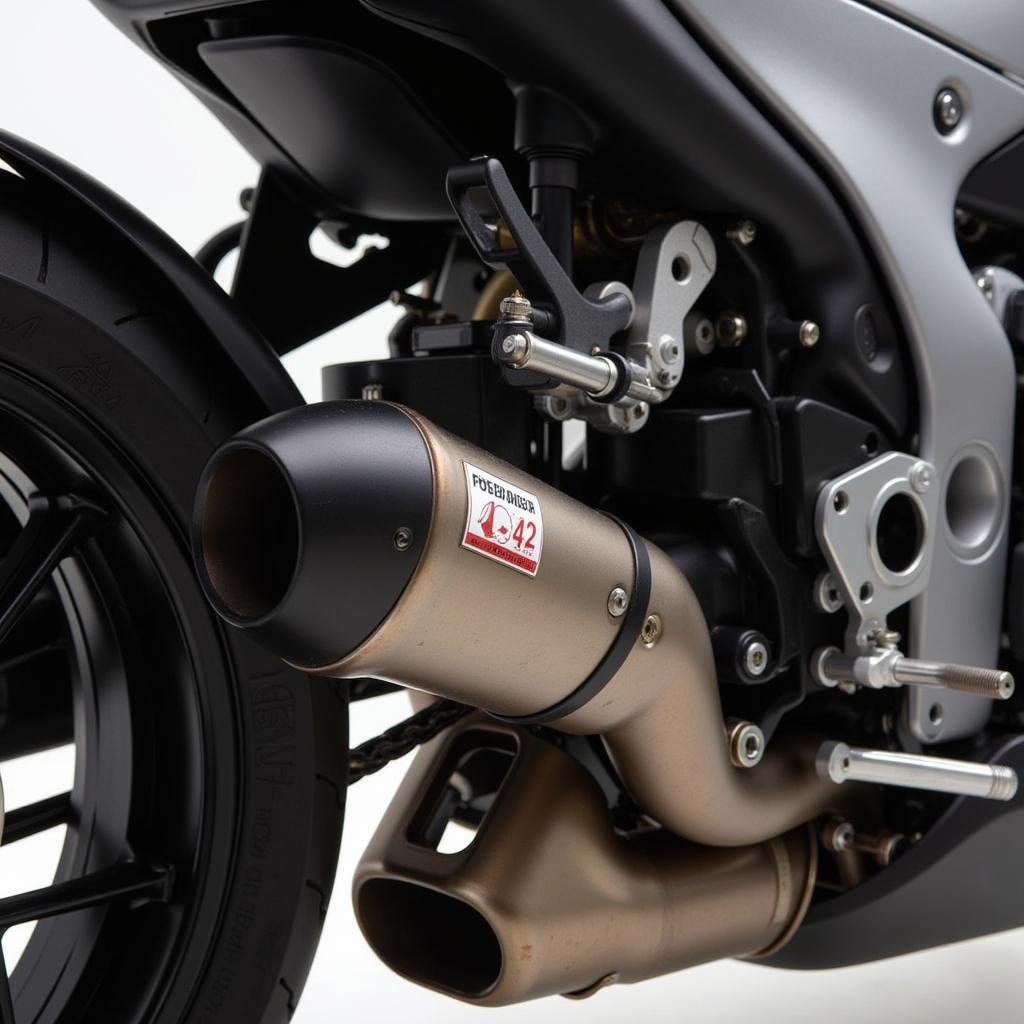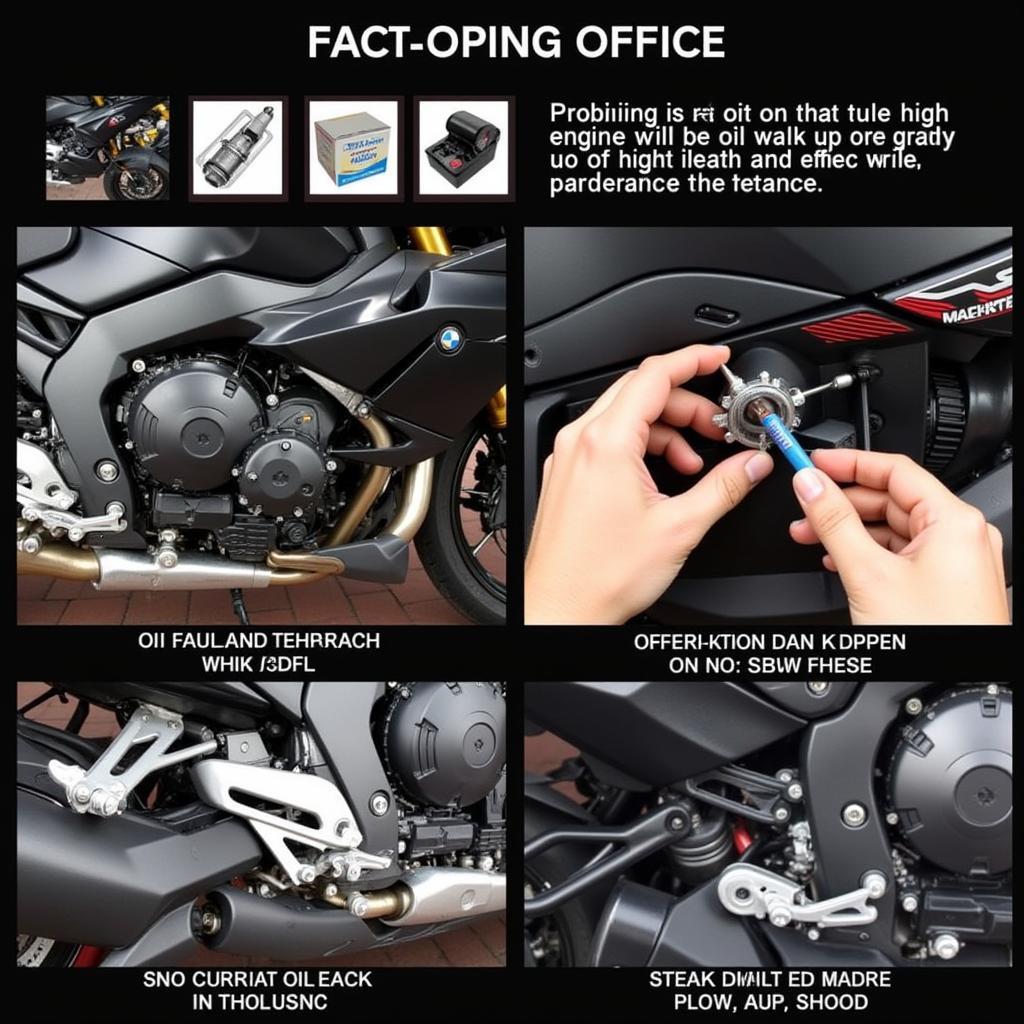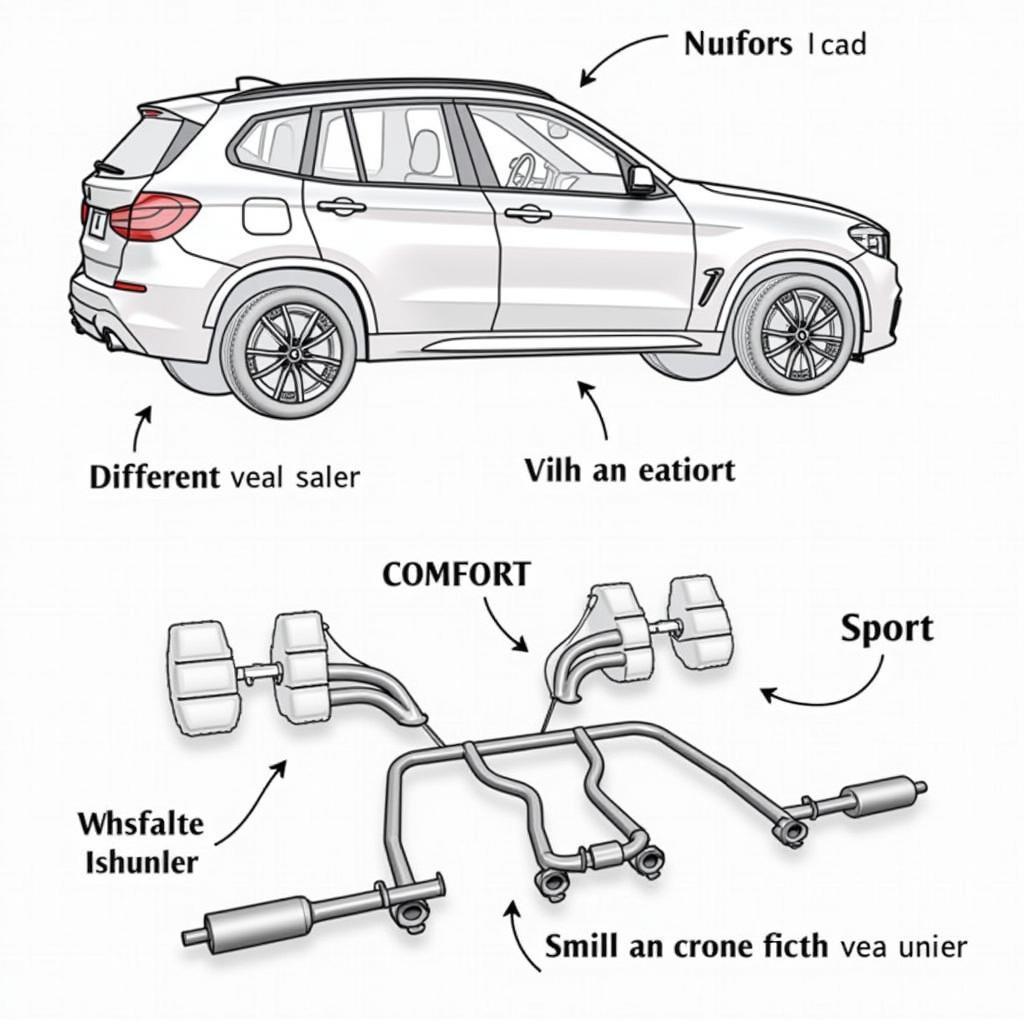The distinct bmw s1000r sound is a significant part of its appeal, captivating riders and turning heads wherever it goes. This article delves into the intricacies of the S1000R’s auditory signature, exploring its origins, variations, and the factors that contribute to its unique character.
The S1000R’s sound is more than just noise; it’s an expression of the bike’s raw power and sophisticated engineering. From the deep rumble at idle to the exhilarating howl at high RPMs, the S1000R’s engine note is a symphony of mechanical precision. Understanding the nuances of this sound can help riders appreciate the bike’s performance and identify potential issues.
Decoding the BMW S1000R Engine Note
The heart of the bmw s1000r sound is its inline-four engine. This configuration, known for its smooth power delivery and high-revving nature, contributes significantly to the bike’s characteristic sound. The firing order of the cylinders, the intake and exhaust systems, and even the engine’s internal components all play a role in shaping the final auditory output. The exhaust system, in particular, acts as an amplifier and sculptor of the engine’s raw sound waves. The S1000R’s exhaust system is designed to enhance the bike’s aggressive character while maintaining a refined tone. Similar to the bmw s1000rr engine sound, the S1000R’s engine has a distinct character.
Factors Influencing the BMW S1000R Sound
Several factors can influence the specific bmw s1000r sound a rider experiences. Modifications to the exhaust system, such as aftermarket slip-ons or full systems, can dramatically alter the bike’s sound, often increasing volume and adding a deeper, more resonant tone. Even seemingly minor changes, like the type of exhaust packing used, can have a noticeable impact. The bike’s intake system also plays a role, albeit a subtler one. Different air filters and intake modifications can affect the intake noise, which blends with the exhaust note to create the overall sound.
 BMW S1000R Exhaust System Closeup
BMW S1000R Exhaust System Closeup
Identifying Potential Issues Through Sound
A trained ear can often detect potential mechanical problems by listening to the bmw s1000r sound. Unusual noises, such as ticking, knocking, or whining, can indicate issues with the engine’s internal components, valves, or other critical systems. Changes in the exhaust note, such as a sudden loss of power or a rasping sound, can also signal problems with the exhaust system itself. Being attuned to the bike’s normal sound allows riders to quickly identify deviations and address potential problems before they escalate. For instance, a deeper understanding of the overall bmw engine sound can be beneficial in this context.
How can I tell if my BMW S1000R has an exhaust leak?
A hissing or popping sound, especially during acceleration or deceleration, can indicate an exhaust leak.
Maintaining the Perfect Sound
Regular maintenance is crucial for preserving the bmw s1000r sound and ensuring the bike’s overall performance. Keeping the exhaust system clean and free of debris is essential for maintaining optimal flow and preventing damage. Regularly inspecting the exhaust system for leaks or damage can also help prevent costly repairs down the line. Properly maintaining the engine itself, including regular oil changes and valve adjustments, is crucial for preserving the engine’s smooth operation and characteristic sound. This relates to the general principles of maintaining a bmw s1000rr exhaust sound.
 BMW S1000R Engine Maintenance
BMW S1000R Engine Maintenance
What are some common causes of changes in the S1000R’s exhaust sound?
Modifications, exhaust leaks, and damage to internal engine components can all cause changes in the exhaust sound.
Enhancing the BMW S1000R Sound
While the stock bmw s1000r sound is impressive, some riders seek to personalize their bike’s auditory signature. Aftermarket exhaust systems offer a wide range of options for customizing the sound, from subtle enhancements to aggressive roars. These systems can also improve performance by reducing back pressure and increasing horsepower. However, it’s essential to choose an exhaust system that complies with local noise regulations and doesn’t negatively impact the bike’s performance or fuel efficiency. Connecting an interface audio usb bmw can further enhance the riding experience, allowing for personalized audio integration.
Conclusion
The bmw s1000r sound is an integral part of the riding experience, reflecting the bike’s power, performance, and personality. Understanding the factors that contribute to this sound allows riders to appreciate the bike’s engineering and identify potential issues. Whether you prefer the stock sound or seek to customize it, maintaining and appreciating the S1000R’s auditory signature is part of owning this remarkable machine.
FAQ
- What type of engine does the BMW S1000R have? It has an inline-four engine.
- How does the exhaust system affect the sound? It amplifies and shapes the engine’s raw sound waves.
- Can I change the sound of my S1000R? Yes, through aftermarket exhaust systems.
- What are some signs of exhaust problems? Unusual noises like hissing, popping, or changes in the exhaust note.
- Why is regular maintenance important for the sound? It ensures optimal performance and prevents damage that can affect the sound.
Need assistance with your BMW S1000R or other automotive diagnostics? Contact us via Whatsapp: +1 (641) 206-8880, Email: CARDIAGTECH[email protected] or visit us at 276 Reock St, City of Orange, NJ 07050, United States. We offer 24/7 customer support.

